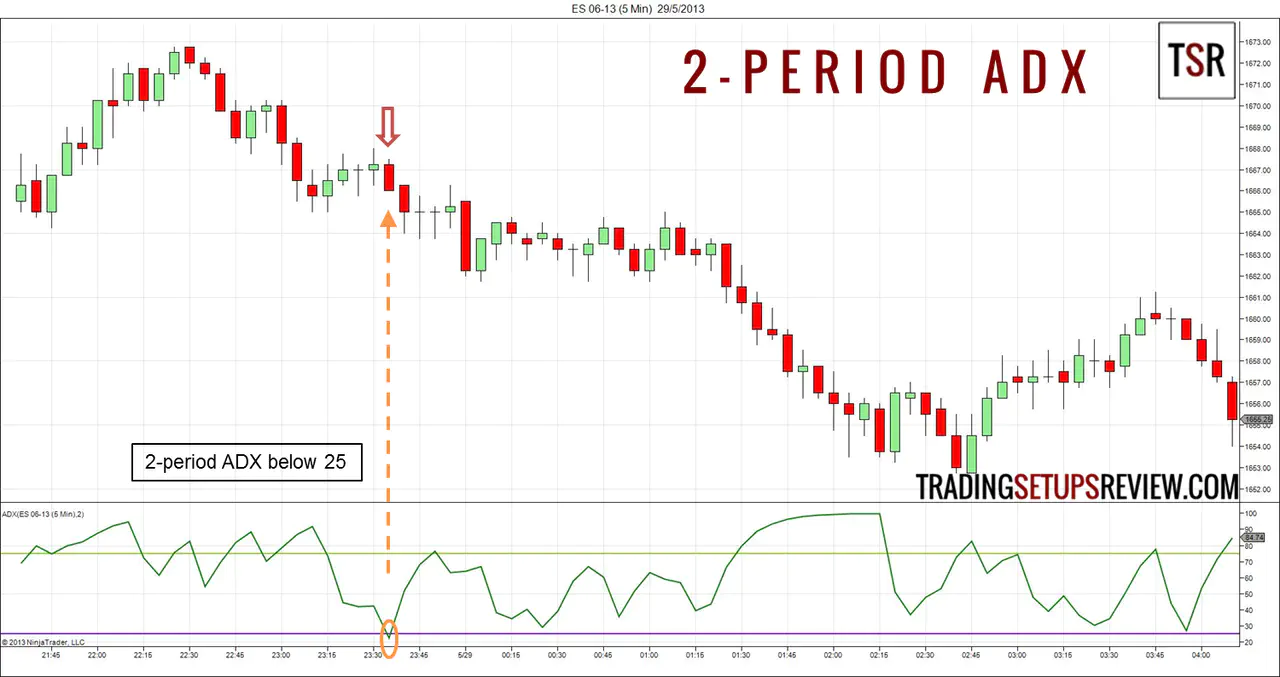Day Trading With ADX Indicator
By Galen Woods ‐ 3 min read
Learn a simple day trading strategy that simplifies day trading with ADX Indicator. Overcome the lag in ADX indicator and adapt it for day trading.
The ADX indicator by J. Welles Wilder is a wildly popular indicator.
Many trading strategies like Linda Raschke’s Holy Grail and Jeff Cooper’s 5 Day Momentum Method use the ADX indicator to identify strong trends. However, day trading with the ADX indicator is not common.
The reason is while the ADX indicator is good at identifying strong trends, it is a lagging indicator. Lagging indicators might work for position trading, but are not acceptable in day trading.
In that case, is day trading with the ADX indicator possible?
Yes, if you are willing to give my 2-period ADX day trading strategy a try.
2-period ADX Indicator For Day Trading
For technical indicators, the shorter the period, the more sensitive it is to price action.
Hence, a 2-period ADX indicator is acutely sensitive to price movements. It responds quickly, but erratically.
Look at the 2-period ADX indicator on the 5-minute ES chart below. You will notice that it goes above 75 a lot more often than dropping below 25.
This phenomenon makes sense. Recall that the ADX indicator measures the strength of trends. ADX values above 75 mean extreme trendiness and values below 25 represent a lack of trend strength.
A 2-period ADX indicator is very sensitive. Thus, it detects small and fleeting trends and rises above 75 easily. These short-lived trends are common but not profitable for trading.
On the other hand, it takes lots of inaction for the ultra sensitive 2-period ADX indicator to drop below 25.
When it does drop below 25, it has found the rare eye of the storm, the absolute calmness before a significant breakout.
Trade Breakouts With ADX Indicator
When day trading with the ADX indicator, we focus on the 2-period ADX falling below 25.
When that happens, we prepare ourselves for trading break-outs into potent new trends.
In this trading session, the 2-period ADX indicator fell below 25 to indicate the perfect pause.
Use bracket orders that include a buy stop order above the signal bar and a sell stop order below it. Once one of the stop order is triggered, the other one will be canceled.
As you can see from the candlestick chart above, the price fell below the signal bar and triggered the sell order. It gave us a solid day trade that captured most of the day’s range.
If the price action context is not trending, you might want to consider taking small profits instead of letting profits run.
Day Trading With ADX Indicator Is Possible (And Profitable)
In essence, the 2-period ADX indicator is a powerful tool to find high probability break-out trades.
The 2-period ADX indicator searches for the ideal low-risk entry point for day trading strategies.
It is a simple tool that you can easily integrate with your day trading setups.
Add it into your day trading strategy as a timing device, or use it as a scalping trade setup. You will be pleasantly surprised.
Learn: Trend Trading Strategy Using The 2-Period ADX Indicator
Read: The Secret To Using ADX Indicator
If you like the idea of using fast indicators, you will love the 2-period RSI.

